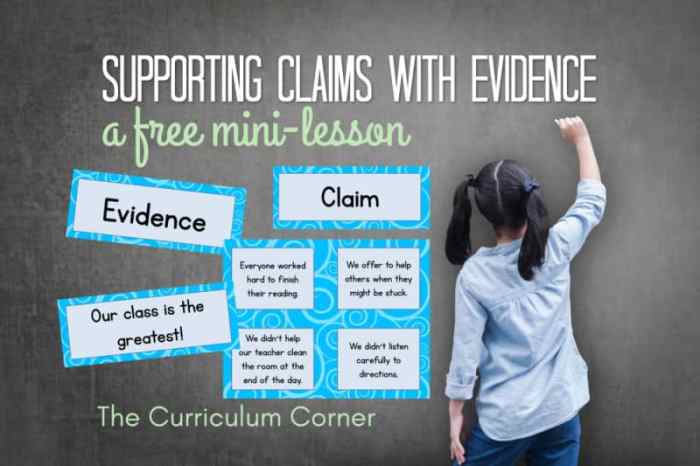Unit 2 claims and evidence – writing quiz – Embark on an intellectual journey with our Unit 2 Claims and Evidence Writing Quiz, meticulously crafted to sharpen your critical thinking skills and enhance your ability to construct persuasive arguments. This comprehensive assessment delves into the intricacies of claims and evidence, providing you with the tools to analyze, evaluate, and effectively incorporate evidence into your writing.
As you navigate through this quiz, you will gain a deeper understanding of the essential elements of a claim, the role of evidence in supporting arguments, and the strategies for finding and evaluating credible sources. You will also learn how to organize and structure your claims and evidence logically, ensuring that your writing is both coherent and persuasive.
Claims and Evidence: Unit 2 Claims And Evidence – Writing Quiz

In writing, a claim is a statement that asserts a position or makes an argument. Effective claims are clear, specific, and arguable. They provide a roadmap for the writer’s argument and guide the reader’s understanding of the text. Evidence supports claims by providing facts, examples, or other data that demonstrate the validity of the claim.
Identifying and Using Evidence
Finding credible evidence involves consulting reliable sources such as academic journals, government reports, and reputable news outlets. Evaluating the reliability of sources requires considering factors like the author’s expertise, the publication’s reputation, and the presence of bias.
Evidence can be incorporated into writing through direct quotations, paraphrasing, or summarizing. It is important to cite all sources to avoid plagiarism and establish the credibility of the claims being made.
Organizing and Structuring Claims and Evidence
Organizing claims and evidence logically involves creating a clear and coherent structure for the essay or response. This can be achieved through the use of an introduction, body paragraphs, and conclusion.
Body paragraphs should focus on a single claim and provide supporting evidence. Transitions help connect ideas and guide the reader through the text.
Analyzing Claims and Evidence
Analyzing claims and evidence involves evaluating the strength of arguments and identifying potential logical fallacies. Techniques for evaluating arguments include examining the evidence, considering counterarguments, and assessing the author’s reasoning.
Common logical fallacies to avoid include ad hominem attacks, straw man arguments, and circular reasoning.
Writing a Quiz on Claims and Evidence, Unit 2 claims and evidence – writing quiz
A quiz on claims and evidence tests students’ understanding of the concepts and their ability to analyze and evaluate arguments. Questions can include identifying claims, evaluating the reliability of sources, and analyzing the strength of arguments.
Writing a quiz on this topic helps reinforce students’ understanding of the importance of claims and evidence in writing and critical thinking.
General Inquiries
What is the purpose of a claim in writing?
A claim is a statement that asserts a position or makes an argument. It is the central idea that your writing will support and defend.
How can I find credible evidence to support my claims?
Credible evidence can be found from a variety of sources, including academic journals, reputable news organizations, and government websites. When evaluating sources, consider their authority, accuracy, and relevance to your topic.
What are some common logical fallacies to avoid?
Common logical fallacies include ad hominem attacks, straw man arguments, and false dilemmas. These fallacies weaken your argument and can damage your credibility.

